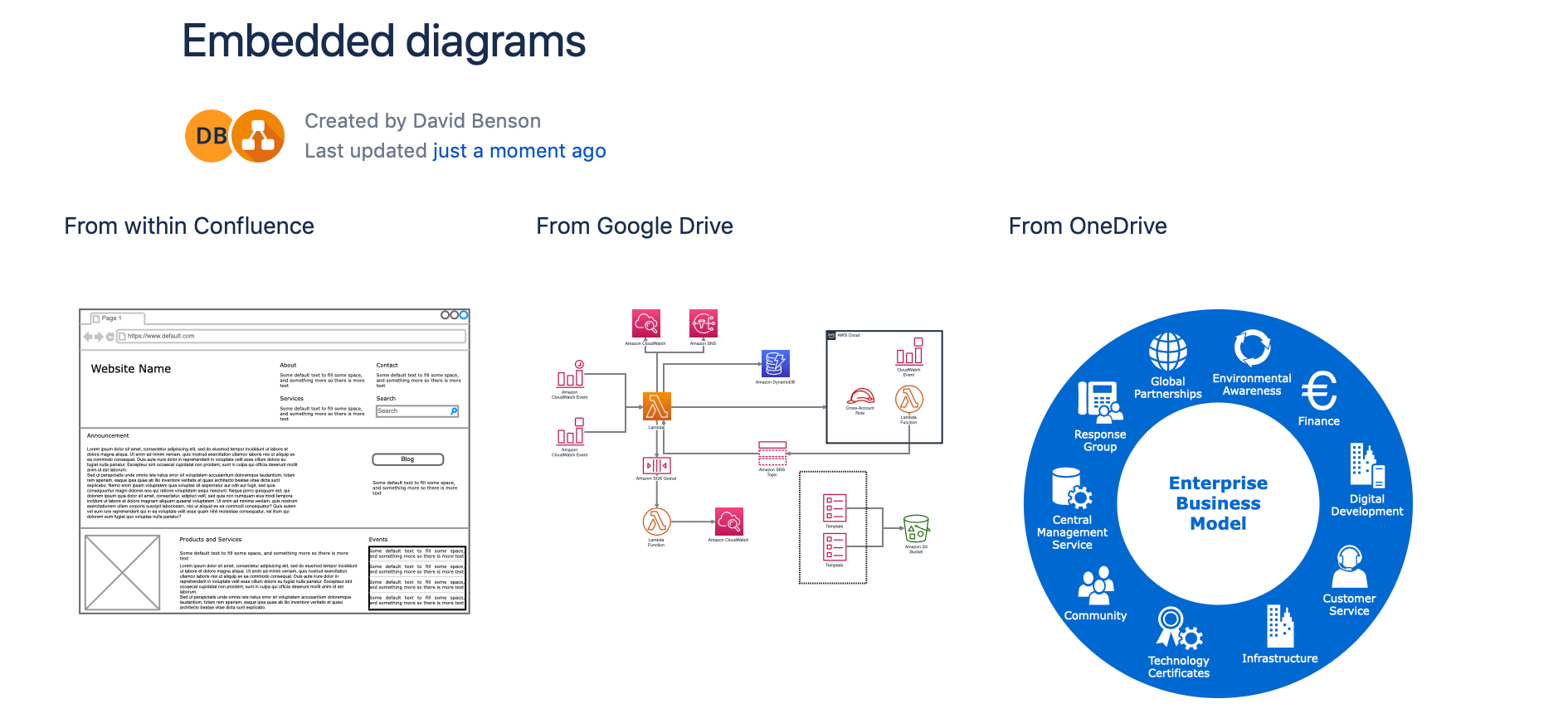Importing R markdown to Confluence. Ask Question Asked 5 years, 8 months ago. Active 1 month ago. Viewed 3k times 6. I'm trying to work out a way to post into confluence a R statistical program Markdown file. So far I have converted the markdown to PDF and imported that but I would like to be able to embed the markdown page directly. The Markdown Macro for Confluence is an application that provides quick and simple support for markdown in Atlassian Confluence. Visit Atlas Authority for more details on Confluence Import Markdown Macro. The importance of technical documentation and top software documentation tools you will find here! Confluence, Huddle, Swagger, Markdown and many others! 通过以上的 4 个步骤我们就可以完成通过程序自动化地在 confluence 中创建 markdown 文档. Confluence-记一次 confluence markdown 表格样式不美观发生的事. Xwiki 文档迁移到 confluence-1 迁移方案.
- Confluence Import Markdown From Bitbucket
- Confluence Markdown Imports
- Confluence Export Markdown
- Confluence Markdown Import

Released:
Publish to and manage Confluence spaces with markdown files tracked in Git.
Project description
With Junction you can write and manage your documentation directly in your codebase, using Markdown and your existing Git workflows (pull requests, code review, release branches, etc) and then automatically publish your changes to Confluence. This gives you the best of both worlds: in-repo documentation that fits natively into your development workflows, with the discoverability and centrality of Confluence.

Ensure you are using Python 3.8 (or newer); Junction does not work with older versions of Python. Install using pip:
This will install the library and CLI.In your Python code:
In your shell:
Junction works by inspecting the changes made on a commit-by-commit basis to your Git repository, and determining what needs to be changed in Confluence to reflect those changes. Junction (currently) expects to manage the entire space in Confluence. Thus when using Junction you must tell it which Space to target and update. You must not manually change, create, or modify pages in the target space, or else Junction may be unable to synchronize the state in Git with the state in Confluence.
To allow mixing code (and other items) with markdown files for Junction in a single repository, you can tell Junction a subpath within your repository that functions as the root e.g. all markdown files will be kept in docs/. All files should end with the .md extension.
The page will gets its title from the file name, and its contents will be translated into Confluence markup. See this example for what output looks like in Confluence.
Collect a set of credentials that Junction will use to login to Confluence. You will need to create an API token to use instead of a password. I recommend you make a dedicated user account with access permissions limited to the space(s) you want to manage with Junction.
In your git repository, create a folder structure and markdown files you would like to publish. Commit those changes.
Junction is designed as a library, and also provides 'helpers' that make using it in different contexts easy (in particularly, as part of automated workflows e.g. in post-push builds).
The simplest way to use Junction is the included CLI junction:
You can put the API, user, and key into environment variables to avoid specifying them for every invocation of Junction. The variables are CONFLUENCE_API, CONFLUENCE_API_USER, and CONFLUENCE_API_KEY respectively.
The CLI is fully documented, so make use of the --help option to navigate all of the configuration options.
Dry Run
You can check what the junction CLI will do to your space without actually uploading the changes to Confluence by using the --dry-run flag.
Python Library
Using the Python library will let you create your own wrappers and tools, for example an AirFlow DAG. Here is an equivalent of the above CLI usage in Python:
The following markdown sample, stored in Sample.md, produces a page in Confluence that looks like this. This shows all of the major supported features and markup. It is intentionally very similar to GitHub-style markdown, with some extensions and differences to account for Confluence-specific features.
This is a hobby project of mine, and I may not be able to work on it immediately upon request. If you are interested in contributing, feel free to open a PR by following the contribution guidelines.
Release historyRelease notifications | RSS feed
Confluence Import Markdown From Bitbucket
0.1.1
0.1.0
Download files
Download the file for your platform. If you're not sure which to choose, learn more about installing packages.
Confluence Markdown Imports
| Filename, size | File type | Python version | Upload date | Hashes |
|---|---|---|---|---|
| Filename, size confluence_junction-0.1.1-py3-none-any.whl (34.2 kB) | File type Wheel | Python version py3 | Upload date | Hashes |
| Filename, size confluence-junction-0.1.1.tar.gz (31.8 kB) | File type Source | Python version None | Upload date | Hashes |
Hashes for confluence_junction-0.1.1-py3-none-any.whl
Confluence Export Markdown
| Algorithm | Hash digest |
|---|---|
| SHA256 | a0e9f64e534a643f673b21608da4e5b7c207082abee171be9424a4baaca07b7c |
| MD5 | f8d592fee548ef2120a19487495ea11c |
| BLAKE2-256 | 5438f2b9fadf0f9060d6dcb2034c98656317bd69fb37b8294179dabfb67906d3 |
Hashes for confluence-junction-0.1.1.tar.gz
Confluence Markdown Import
| Algorithm | Hash digest |
|---|---|
| SHA256 | b859be9591567d1b3bbe273bb7f3be4eb02d678277ab2be5ad4c4227d4c67149 |
| MD5 | 2c2ae0efcc8cf4f578497a94afecc347 |
| BLAKE2-256 | b708af63949337f07781c6719b087d4f3696a3c2b1f265813c5ae30158515dc4 |
